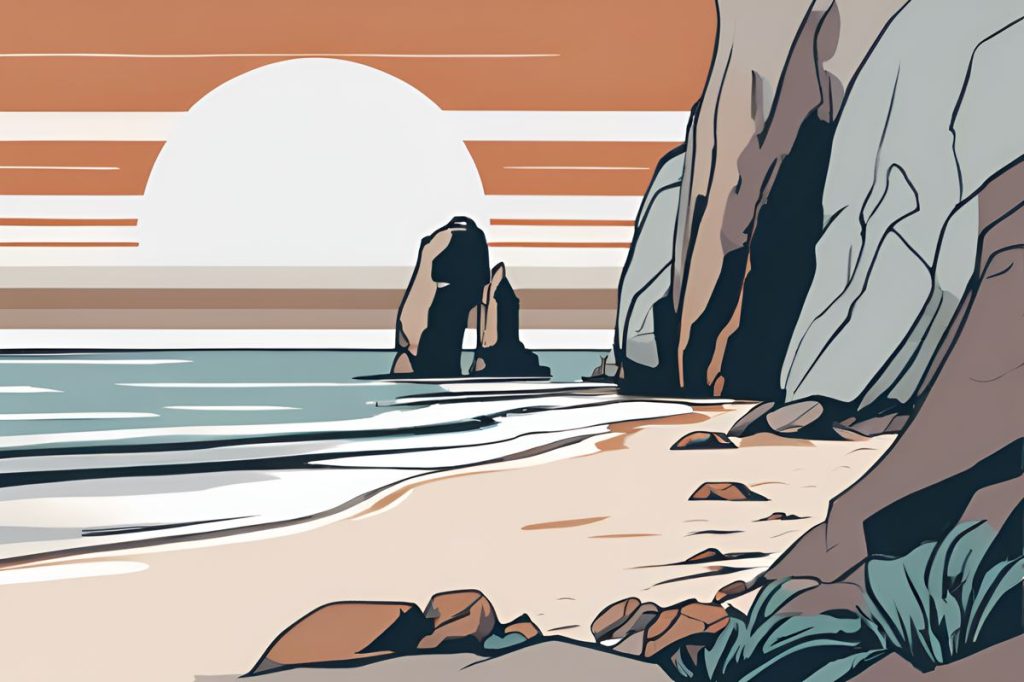Cape Aspro and Petra tou Romiou are seeking UNESCO World Heritage status due to their unique blend of cultural significance, rich biodiversity, and geological marvels. This coastal region in Cyprus includes stunning landscapes, mythological heritage, and archaeological treasures, making it a strong candidate for international recognition.
What are the main reasons Cape Aspro and Petra tou Romiou are seeking UNESCO World Heritage status?
Cape Aspro and Petra tou Romiou aim for UNESCO recognition due to their unique blend of cultural significance, rich biodiversity, and geological marvels. Key reasons include:
- The area’s rich culture and mythological heritage.
- Vibrant natural environment with significant ecological importance.
- Striking geomorphological features and fossilized remains.
- Archaeological relevance with evidence of ancient human settlements.
Efforts for Recognition
The stunning coastal region of Cape Aspro and the renowned Petra tou Romiou, also known as Aphrodite’s Rock, are on the verge of gaining international recognition. Environment Commissioner Antonia Theodosiou, alongside the local communities of Pissouri and Kouklia, has initiated a proposal for these sites to be honored as part of the UNESCO Cultural Heritage List. Theodosiou highlighted the area’s rich culture, vibrant natural environment, and striking geomorphological structures as key factors in the bid for recognition.
Cape Aspro, with its cliffside vistas and the myth-enshrouded Petra tou Romiou, symbolizes a blend of natural splendor and cultural significance. Theodosiou emphasized the importance of acknowledging the unique allure and biodiversity of the region, as well as its historical and mythological relevance, as cardinal in promoting its inclusion on the prestigious list.
Criteria for Selection
For a site to be selected as a UNESCO World Heritage Site, it must be of outstanding universal value and satisfy one or more of the ten criteria outlined by the International World Heritage Convention. These benchmarks range from cultural and archaeological significance to geological and biological considerations. The proposal aims to encompass the entirety of the area within Pissouri and Kouklia, connecting it with Palaipafos and the legend of the birth of Aphrodite, thus enhancing the area’s qualifications for the list.
If successful, this area would become the second mixed heritage site in Cyprus recognized by UNESCO, following the southern part of the Mathiatis mine, which has been listed since 2002. The inclusion of Cape Aspro and Petra tou Romiou would not only honor the local history but also bring global attention to Cyprus’s rich cultural and natural heritage.
Natural and Cultural Treasure
The region’s designation as a Special Protection Area is a testament to its ecological importance, providing sanctuary to notable bird species such as the black falcon and the shag, among others. Additionally, it is recognized as a Special Area of Conservation due to the presence of diverse habitat types and significant flora and fauna species. These ecological attributes further demonstrate the outstanding value of the area.
Geologically, the area also commands attention; the limestone formations at Petra tou Romiou exhibit fascinating fossilized remains of corals and algae, indicating a rich prehistoric marine life. Furthermore, recent archaeological findings suggest the presence of ancient human settlements, adding another layer of historical depth to the site’s candidacy for the UNESCO list.
Preservation and Promotion
The collective efforts by local authorities and communities underscore a deep-rooted commitment to preserving and promoting the region’s cultural and natural assets. Embracing its geological wonders and archaeological findings, Cape Aspro and Petra tou Romiou stand as symbols of Cyprus’s heritage. The approval of this proposal would not only elevate the international stature of these landmarks but also encourage conservation and educational initiatives, ensuring that the legacy of these sites continues to captivate and enlighten future generations.
What are the main reasons Cape Aspro and Petra tou Romiou are seeking UNESCO World Heritage status?
Cape Aspro and Petra tou Romiou aim for UNESCO recognition due to their unique blend of cultural significance, rich biodiversity, and geological marvels. Key reasons include:
1. The area’s rich culture and mythological heritage.
2. Vibrant natural environment with significant ecological importance.
3. Striking geomorphological features and fossilized remains.
4. Archaeological relevance with evidence of ancient human settlements.
Who is leading the efforts for recognition of Cape Aspro and Petra tou Romiou as UNESCO World Heritage Sites?
Environment Commissioner Antonia Theodosiou, alongside the local communities of Pissouri and Kouklia, has initiated a proposal for these sites to be honored as part of the UNESCO Cultural Heritage List. Theodosiou highlighted the area’s rich culture, vibrant natural environment, and striking geomorphological structures as key factors in the bid for recognition.
What criteria must a site meet to be selected as a UNESCO World Heritage Site?
For a site to be selected as a UNESCO World Heritage Site, it must be of outstanding universal value and satisfy one or more of the ten criteria outlined by the International World Heritage Convention. These benchmarks range from cultural and archaeological significance to geological and biological considerations. The proposal aims to encompass the entirety of the area within Pissouri and Kouklia, connecting it with Palaipafos and the legend of the birth of Aphrodite, thus enhancing the area’s qualifications for the list.
What is the significance of Cape Aspro and Petra tou Romiou as a natural and cultural treasure?
The region’s designation as a Special Protection Area is a testament to its ecological importance, providing sanctuary to notable bird species such as the black falcon and the shag, among others. Additionally, it is recognized as a Special Area of Conservation due to the presence of diverse habitat types and significant flora and fauna species. Geologically, the limestone formations at Petra tou Romiou exhibit fascinating fossilized remains of corals and algae, indicating a rich prehistoric marine life. Furthermore, recent archaeological findings suggest the presence of ancient human settlements, adding another layer of historical depth to the site’s candidacy for the UNESCO list.

